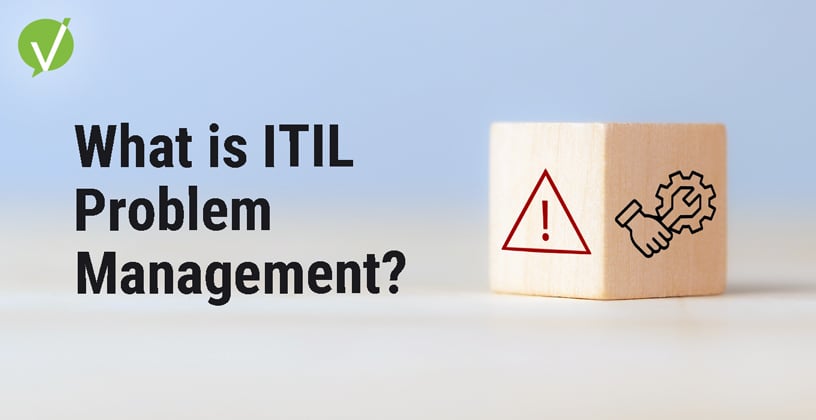What Is ITIL Problem Management in ITSM?
Introduction
As an organization, you rely on technology to drive business success and deliver efficient operations. However, IT service disruptions can pose a severe threat to this success, leading to lost revenue, decreased productivity, and poor customer experience. This is where problem management comes in.
Problem management is a vital process that aims to ensure stable and reliable IT service operations. It involves identifying and resolving recurring IT issues to minimize the impact of service disruptions and prevent them from happening in the future. The goal of problem management is to proactively address potential problems and prevent them from causing a significant business impact.
Key Takeaways:
- Problem management plays a crucial role in ensuring stable and reliable IT service operations.
- Problem management software can help organizations identify, analyze, and resolve underlying issues within their IT infrastructure.
- Proactive problem management measures help prevent potential problems from occurring.
- Implementing effective problem management can lead to increased business success.
- Problem management aligns with other ITIL processes, such as incident and change management, to provide comprehensive IT service delivery and support.
Understanding Problem Management
When it comes to ensuring stable and reliable IT service operations, problem management plays a vital role. This process involves identifying and resolving underlying issues to prevent a recurring incident or problem that could cause service disruptions and impact business operations.
At its core, problem management is closely related to incident management and change management, forming a crucial part of the ITIL framework. While incident management focuses on restoring services as quickly as possible, problem management aims to identify and eliminate the cause of the problem, preventing similar issues from occurring in the future.
The problem management process involves several stages, including identification, investigation, diagnosis, and resolution. During the identification phase, the problem management team works to gather data and define the scope of the problem. This is followed by a thorough investigation of the problem, using information from incident records to identify patterns and potential root causes. Once the problem has been diagnosed, the team can work towards developing a resolution and managing any known errors.
Overall, problem management contributes to the stability of IT services by reducing the number of incidents, increasing incident resolution, and promoting proactive IT service management. By establishing a robust problem management practice, organizations can ensure the continued success of their business operations.
Root Cause Analysis and Known Error Management
In the problem management process, it is essential to find the cause of the problem to prevent them from happening again. Conducting a root cause analysis is a crucial step towards achieving stable and reliable IT service operations. A dedicated problem management team plays a significant role in identifying the cause of a problem.
The main objective of a root cause analysis is to determine the underlying issue and involves systematically investigating each aspect of the issue until the core problem is identified. Once the cause is determined, the team can develop an action plan to address the issue and implement preventive measures to reduce the risk of its recurrence.
Known errors are problems that have been identified and for which there is already a workaround or a solution available. Effective known error management entails documenting each known error in the knowledge base for reference purposes. This documentation should include detailed information about the error, the root cause, and the problem control or workaround.
With a proactive approach to problem management, organizations can minimize disruptions to IT services and improve overall productivity.
Proactive Management Software
Problem Management Software is a key component of the ITIL process, empowering organizations to proactively identify and address potential issues, preventing them from evolving into critical problems.
A critical function of Problem Management Software is its ability to create problem records. These records serve as a comprehensive repository for potential issues, providing valuable insights for future problem resolution efforts. They also enable the monitoring of recurring problems, facilitating continuous improvement in problem management practices.
The implementation of Problem Management Software not only mitigates risks but also elevates problem and resolution response while minimizing business disruptions. By identifying and resolving issues before they impact operations, organizations can maintain a stable and dependable IT service environment, ultimately leading to improved business outcomes.
Best Practices for Effective Problem Management
Effective problem management is essential for ensuring smooth IT service operations and minimizing the impact of incidents. By adopting best practices, you can improve the efficiency of problem management processes and deliver value to your business. Here are some crucial best practices for effective problem management:
- Integrate incident and problem management processes: Integrating incident and problem management processes can help address issues promptly and minimize their impact on the business. By linking incidents to problems, you can identify repetitive issues and resolve them before they escalate into major incidents.
- Implement a well-defined problem management approach: A well-defined problem management approach can streamline the problem management process, making it more efficient and effective. The approach should include steps for identifying, analyzing, and resolving problems, as well as guidelines for creating and maintaining problem records.
- Empower your problem management team: A dedicated problem management team can help your organization identify and address problems quickly. Empowering them with the necessary tools and resources will enable them to work efficiently, make informed decisions, and solve complex problems.
- Continuously monitor and review problem management processes: Regularly reviewing and monitoring problem management processes can help identify weak areas that require improvement. By tracking KPIs and metrics, you can measure the effectiveness of problem management and implement changes to enhance the process.
By following these best practices, you can establish a robust problem management framework that boosts the efficiency of IT service delivery and supports your business goals.
Problem Management Roles and Responsibilities
Effective problem management is essential for the smooth functioning of IT service operations. It involves identifying, analyzing, and resolving issues that impact the delivery of quality services to end-users. A problem manager is responsible for overseeing these activities and ensuring that the problem management work is carried out efficiently and effectively.
The problem management lifecycle consists of several stages that are critical to the resolution of problems. These stages include:
Stage |
Description |
|---|---|
| Problem identification | Identifying issues or incidents that require further investigation and analysis to determine the underlying cause. |
| Problem analysis | Conducting a thorough analysis of the identified problem to determine the underlying cause(s). |
| Problem resolution | Developing and implementing a solution to address the underlying cause(s) of the problem. |
| Problem closure | Verifying that the problem has been resolved and documenting all relevant information for future reference. |
The problem manager is responsible for overseeing the problem management lifecycle and ensuring that each stage is carried out effectively. This involves collaborating with other ITIL processes to ensure that incident management, change management, and other relevant processes are aligned with problem management.
Effective problem management requires a systematic approach and a commitment to continuous improvement. By establishing clear processes, leveraging automation tools, and fostering a culture of collaboration between IT teams and end-users, organizations can achieve efficient and effective problem management that contributes to the overall success of their business.
Benefits of Problem Management in IT Service Management (ITSM)
IT service management (ITSM) is a framework that supports the delivery of IT services to meet the needs of customers and the business. Problem management is a critical component of ITSM and aligns with other ITIL processes such as service desk and knowledge management.
Service management involves designing, delivering, supporting, and continually improving IT services to meet business needs. ITSM is a set of best practices for managing IT services and improving customer satisfaction. ITSM includes processes such as incident management, problem management, change management, and service level management.
The service desk a key component of ITSM and provides a single point of contact between IT and the business. The service desk is responsible for logging incidents and service requests and coordinating with problem management to identify and resolve issues in a timely manner.
| Benefits of Problem Management in ITSM | How Problem Management Aligns with Other ITIL Processes |
|---|---|
|
|
|
|
|
|
|
Overall, problem management plays a significant role in ensuring that IT services are aligned with business needs and goals. By adopting a problem management approach in ITSM, organizations can achieve a stable and reliable IT environment that supports business success.
Problem Management Process: Crucial Component
Problem management is a crucial component of IT service operations, playing a vital role in ensuring that your business runs smoothly. By implementing an effective problem management process flow and following the best practices, you can unlock the true value of problem management.
Vivantio has aligned with industry-best practices for over 20 years. Don’t miss the opportunity to invest in problem management software for reliable IT service operations. By putting in place a robust problem management strategy that aligns with industry-best practices, your organization can achieve successful problem management and drive your business toward greater success. Contact our team at Vivantio today or register for a free demo and secure a problem management software capable of creating and maintaining comprehensive problem records.








